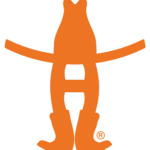HISTORY
Since the Houston Livestock Show and Rodeo™ was established, it has made an impressive footprint on the livestock and entertainment industries and in the sport of rodeo. It also has played a notable role in enhancing the lives of thousands of young people in the state of Texas.
The many milestones celebrated throughout the years have all contributed to Houston’s most popular event. Follow this historical sketch to see the changes undergone and developments that made the Rodeo unique.
Past Entertainers
Check out the all the star entertainers that have performed at the Rodeo, starting with Gene Autry in 1942!
star trail of fame
The Star Trail of Fame pays tribute to the stars that have made a significant impact on the Rodeo throughout the years.
magazine
Check out the archived issues of the “Bowlegged H” Magazine, all the way back to 1993.
attendance
Take a look at the historical attendance of the Houston Livestock Show and Rodeo throughout the years.
show pride presented by shell
During the Rodeo, walk through Show Pride to learn about the Houston Livestock Show and Rodeo’s many contributions to agriculture, education, entertainment and Western heritage throughout its 90 years. Visitors experience the growth of the Rodeo since its beginning in 1932, the incredible variety of entertainers, what the committee volunteers do and more. Show Pride is located in the lobby of NRG Center.
Building Programs
In 1966, the Houston Livestock Show and Rodeo made one of the most significant changes in its history — it moved from the cozy Sam Houston Coliseum to a place that seemed like a city in itself: the Astrodome. The first performance in the new Domed Stadium drew 25,340 spectators, and attendance for one performance even topped 40,000 — almost five times the number of people the Coliseum could hold.
Attendance in the Astrodome consistently toppled records. And in 1996, the Rodeo celebrated its 30th anniversary in the Astrodome complex.
In addition to the Astrodome, two additional facilities were built to host this mammoth event — the Astrohall and the Astroarena. More than just a location for the Rodeo, these buildings have had an immeasurable impact on this organization as well as the entire Houston community.
After building and paying for the Astrohall and Astroarena, the Rodeo donated the facilities to the citizens of Harris County. These two buildings alone helped attract almost 30 million people to the various sporting events, trade shows, expositions and hundreds of other activities since the Astrohall was built in 1966.

